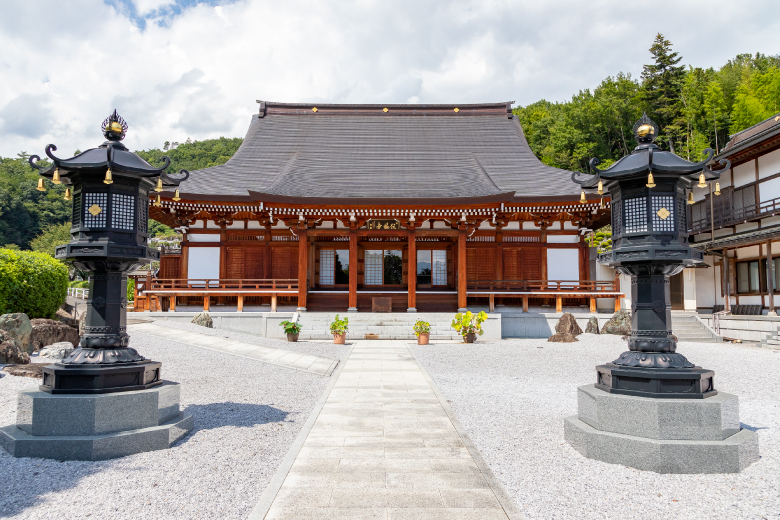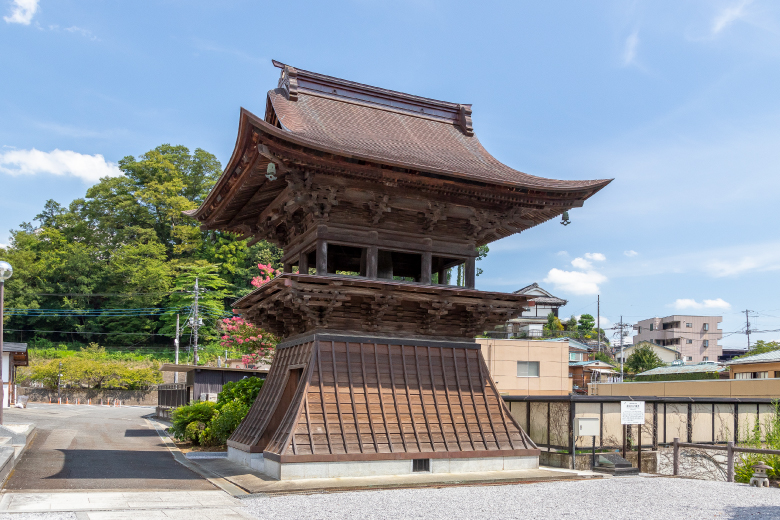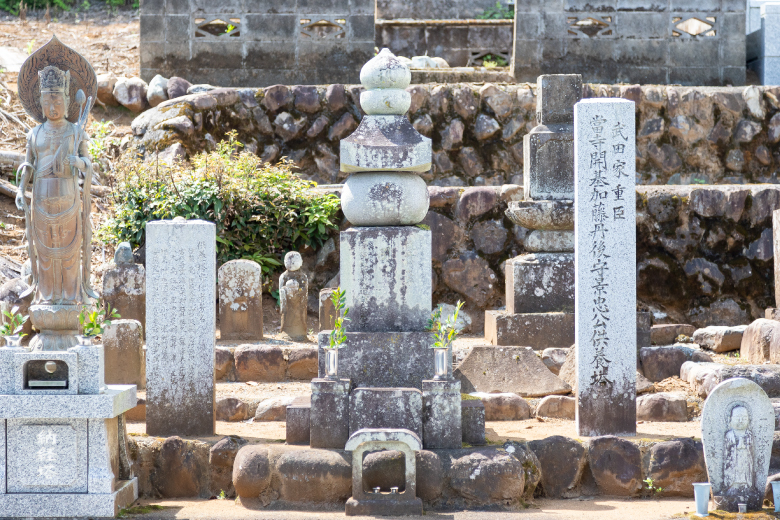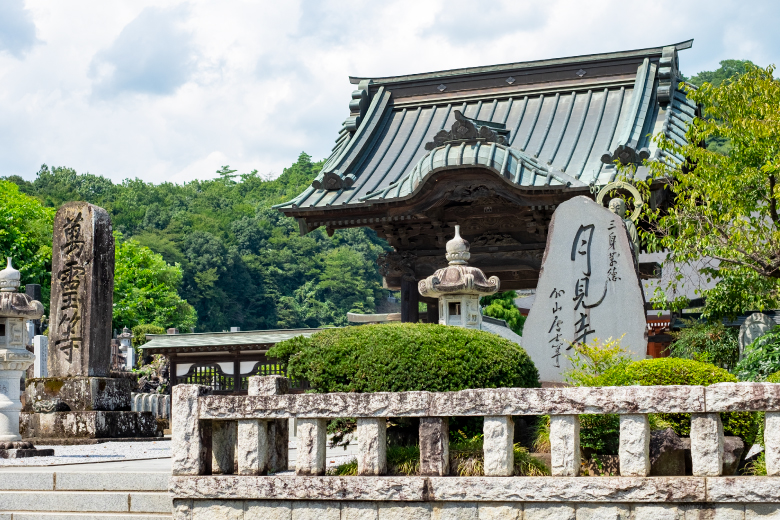Hofuku-ji Temple’s history began when Kato Kagetada, the governor of Tango Region and the lord of Uenohara Castle, converted it from the Shingon Sect to the Soto Sect and relocated it to the present location.
An umban, a copper plate that is struck to signal meals and Buddhist services, is placed in the main hall of the temple. This umban was made in 1373, making it the oldest umban remaining in Yamanashi Prefecture. It is cultural property designated by Yamanashi Prefecture. “Bushu (Musashi Region)” is written on the front of the umban, and it is thought to have been brought back as a spoil of war.
Novelist Kaizan Nakazato wrote in his historical novel “Daibosatsu Toge” that Hofuku-ji Temple in Uenohara, Koshu Region was named Tsukimi-dera Temple. On the right side of the main gate there is a stone monument engraved with “Tsukimi-dera” in Kaizan Nakazato’s handwriting. There are only two stone monuments in Yamanashi Prefecture with engravings of Kaizan Nakazato’s handwriting; one is at Hofuku-ji Temple, and the other is at the peak of Daibosatsu Pass.
An umban, a copper plate that is struck to signal meals and Buddhist services, is placed in the main hall of the temple. This umban was made in 1373, making it the oldest umban remaining in Yamanashi Prefecture. It is cultural property designated by Yamanashi Prefecture. “Bushu (Musashi Region)” is written on the front of the umban, and it is thought to have been brought back as a spoil of war.
Novelist Kaizan Nakazato wrote in his historical novel “Daibosatsu Toge” that Hofuku-ji Temple in Uenohara, Koshu Region was named Tsukimi-dera Temple. On the right side of the main gate there is a stone monument engraved with “Tsukimi-dera” in Kaizan Nakazato’s handwriting. There are only two stone monuments in Yamanashi Prefecture with engravings of Kaizan Nakazato’s handwriting; one is at Hofuku-ji Temple, and the other is at the peak of Daibosatsu Pass.



